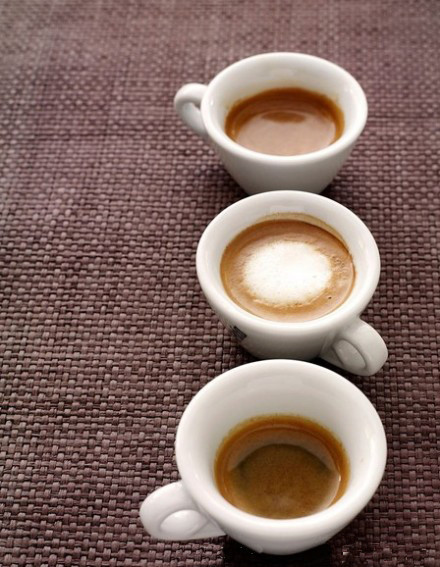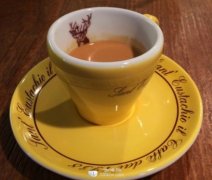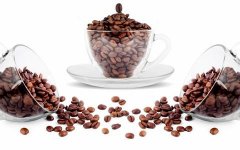The production of Espresso is a technical job, cup knowledge.

The production of Espresso: cups
After that, you should wait for the dark brown-red coffee liquid to appear steadily in the brewing mouth, but there is also a more perfect technical school that will make more demands on the cup. Needless to say, Andre Italian opened a chapter in "Espresso Coffee: a quality related to Chemistry" to define Espresso cups: "small thick-walled porcelain cups with a capacity not more than 50 milliliters." The capacity is small to ensure that the drinks are more concentrated, and synthetic materials are used to ensure that the foam and liquid parts are as clear as they are. " Andre then explained the chemical meaning of these definitions in more detail. In the eyes of ordinary coffee consumers, the artistic value of Illy coffee cups now exceeds chemical value because of the introduction of limited design editions from time to time, but this does not prevent Illy coffee cups from becoming a model of some kind of Espresso coffee cup design: challenging size is risking becoming an American coffee cup, and challenging the thickness and material of the cup wall will infringe on the cup temperature issues that many technologists care about. Preheating the Espresso coffee cup is a hobby of many technical schools, the ideal temperature is 35-40 ℃, while the more stringent preheating practice is: "the coffee cup should be preheated through a heat source other than the coffee machine." Taking a cup of water from the coffee machine to warm the cup will lower the temperature of the boiler water, resulting in uneven extraction. "
Beyond all these parameters, you end up with a perfect "tiger stripe" Espresso, which some call the "God Shot". Perfect Espresso is the foundation of perfect Capuccino, but more pure Espresso technocrats are not keen on the pursuit of foam flowers and so on. When asked about the end of a perfect Espresso, they would suggest: drink it while it's hot, wash the coffee maker, and get ready for the next one.
Important Notice :
前街咖啡 FrontStreet Coffee has moved to new addredd:
FrontStreet Coffee Address: 315,Donghua East Road,GuangZhou
Tel:020 38364473
- Prev

The production of Espresso is a technical work, the technology of loading powder.
Production of Espresso: where to put the handle of the powder filter is a matter of opinion for the time being, let's see the powder loading. Andre Yili has a short sentence of 7g, but in the eyes of some careful people, this stage can be described as the most difficult step in the Espresso process. The coffee powder compacted in the filter handle is often called the cake, and for Espresso, there are more than one per second.
- Next

Delicious coffee making technology is the soul of coffee.
When we go to a cafe, we often see a double-ended machine and a professional bean grinder, but does the coffee satisfy you? maybe you will say: the beans are not good enough for me. With a good machine, you can't make good coffee without good beans. I think everyone basically knows this, but with good machines and good beans, can you certainly make good coffee? In the last two years, everyone should know
Related
- Beginners will see the "Coffee pull flower" guide!
- What is the difference between ice blog purified milk and ordinary milk coffee?
- Why is the Philippines the largest producer of crops in Liberia?
- For coffee extraction, should the fine powder be retained?
- How does extracted espresso fill pressed powder? How much strength does it take to press the powder?
- How to make jasmine cold extract coffee? Is the jasmine + latte good?
- Will this little toy really make the coffee taste better? How does Lily Drip affect coffee extraction?
- Will the action of slapping the filter cup also affect coffee extraction?
- What's the difference between powder-to-water ratio and powder-to-liquid ratio?
- What is the Ethiopian local species? What does it have to do with Heirloom native species?

